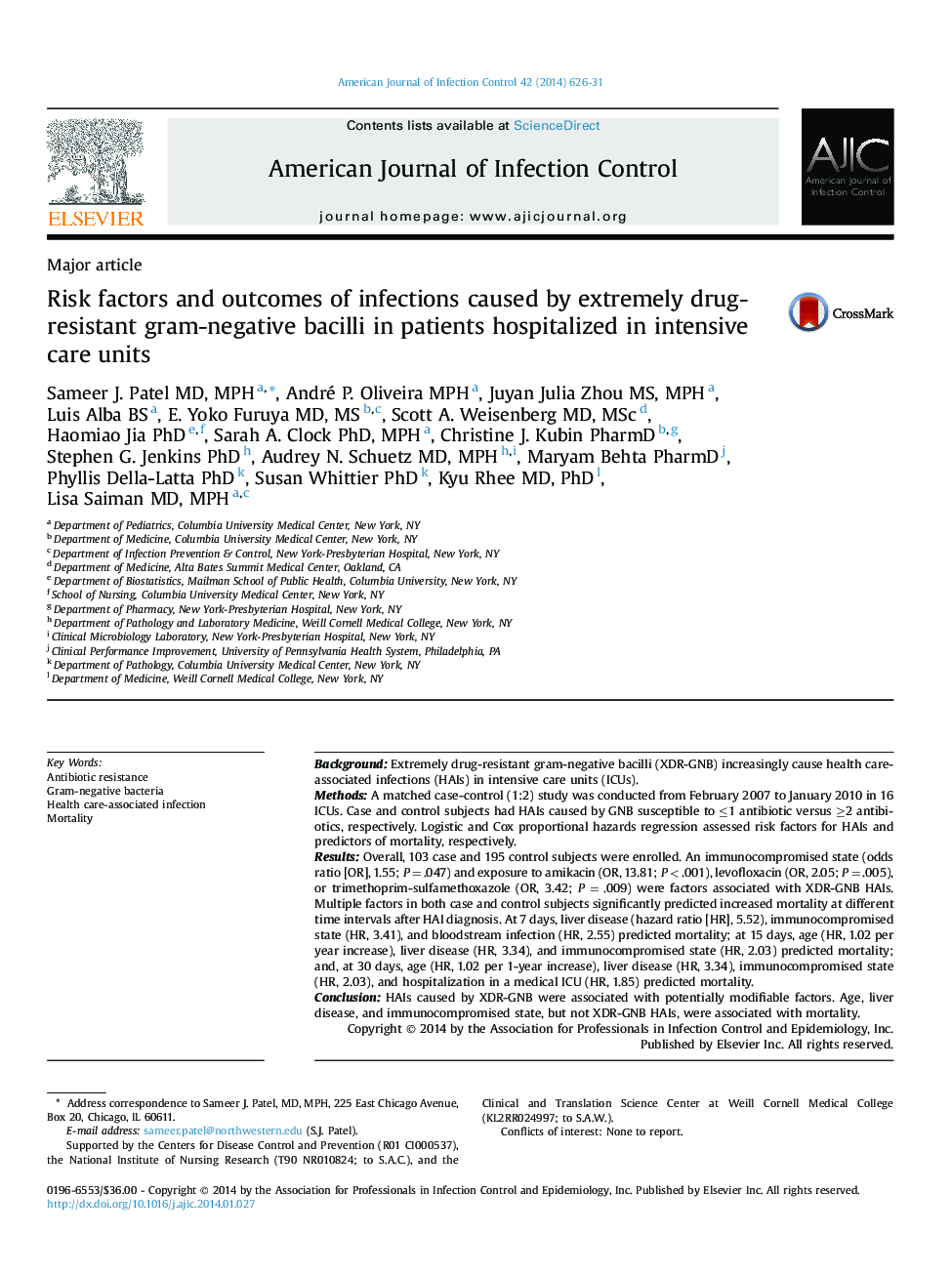| کد مقاله | کد نشریه | سال انتشار | مقاله انگلیسی | نسخه تمام متن |
|---|---|---|---|---|
| 2638191 | 1563485 | 2014 | 6 صفحه PDF | دانلود رایگان |
BackgroundExtremely drug-resistant gram-negative bacilli (XDR-GNB) increasingly cause health care-associated infections (HAIs) in intensive care units (ICUs).MethodsA matched case-control (1:2) study was conducted from February 2007 to January 2010 in 16 ICUs. Case and control subjects had HAIs caused by GNB susceptible to ≤1 antibiotic versus ≥2 antibiotics, respectively. Logistic and Cox proportional hazards regression assessed risk factors for HAIs and predictors of mortality, respectively.ResultsOverall, 103 case and 195 control subjects were enrolled. An immunocompromised state (odds ratio [OR], 1.55; P = .047) and exposure to amikacin (OR, 13.81; P < .001), levofloxacin (OR, 2.05; P = .005), or trimethoprim-sulfamethoxazole (OR, 3.42; P = .009) were factors associated with XDR-GNB HAIs. Multiple factors in both case and control subjects significantly predicted increased mortality at different time intervals after HAI diagnosis. At 7 days, liver disease (hazard ratio [HR], 5.52), immunocompromised state (HR, 3.41), and bloodstream infection (HR, 2.55) predicted mortality; at 15 days, age (HR, 1.02 per year increase), liver disease (HR, 3.34), and immunocompromised state (HR, 2.03) predicted mortality; and, at 30 days, age (HR, 1.02 per 1-year increase), liver disease (HR, 3.34), immunocompromised state (HR, 2.03), and hospitalization in a medical ICU (HR, 1.85) predicted mortality.ConclusionHAIs caused by XDR-GNB were associated with potentially modifiable factors. Age, liver disease, and immunocompromised state, but not XDR-GNB HAIs, were associated with mortality.
Journal: American Journal of Infection Control - Volume 42, Issue 6, June 2014, Pages 626–631
